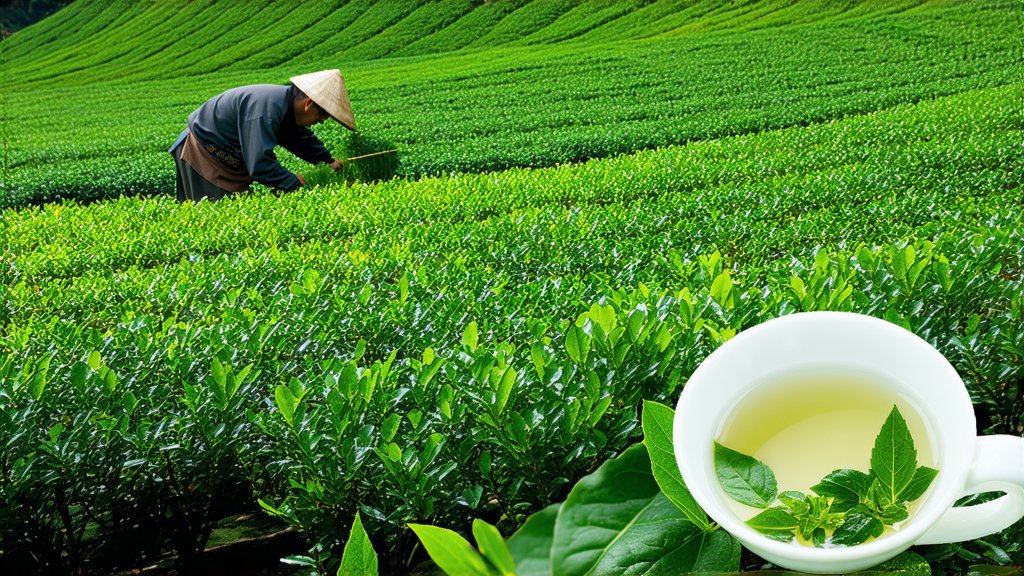
Longjing, often referred to as Dragon Well tea, is one of China's most revered green teas, hailing from the picturesque West Lake region in Hangzhou, Zhejiang Province. This exquisite tea has been celebrated for its delicate flavor, unique aroma, and elegant appearance since the Tang Dynasty, over 1,200 years ago. Its name "Longjing" translates to "Dragon Well," inspired by a legendary spring located near the tea gardens, which was believed to be the dwelling place of dragons.
Historical Significance
The history of Longjing tea is deeply intertwined with Chinese culture and folklore. According to ancient tales, Emperor Kangxi of the Qing Dynasty discovered this exceptional tea during his visit to the West Lake area. He was so impressed by its quality that he decreed four specific tea plants as the original "Imperial Tea Bushes," which still thrive today and are considered the progenitor of all Longjing teas. These bushes are meticulously cared for and their leaves used exclusively for diplomatic gifts and high-level state functions.
Varieties and Characteristics
Longjing tea is primarily grown in two main regions around West Lake – Shi Feng and Meijiawu. While both areas produce high-quality tea, they exhibit subtle differences in taste and aroma due to variations in soil composition, altitude, and microclimate. Shi Feng Longjing is known for its flat, smooth leaves and slightly nutty flavor profile, while Meijiawu Longjing tends to have a more robust, chestnut-like taste with a hint of sweetness.
Regardless of the variety, authentic Longjing tea shares several common characteristics: a vibrant emerald color, a slender and flat leaf shape resembling a spearhead, and a distinct fragrance that evokes the freshness of springtime. When brewed, the tea reveals a pale yellow-green liquor with a clean, mellow taste and a lingering aftertaste that reflects the purity of the tea.
Cultivation and Harvesting
The cultivation of Longjing tea is an art form that requires precision and care. The tea plants are typically grown on terraced hillsides or flat lands adjacent to the West Lake. The optimal time for harvesting is during the early spring, specifically around Qingming Festival (Tomb Sweeping Day), when the tenderest buds and youngest leaves are handpicked. Only the top one or two leaves and bud are selected, ensuring the highest quality.
Processing Techniques
The processing of Longjing tea involves several intricate steps that contribute to its distinctive character:
-
Fixation: Freshly picked leaves are quickly heated in large woks to halt oxidation, preserving the green color and fresh aroma. This step also helps to soften the leaves for shaping.
-
Shaping: The hallmark feature of Longjing tea is its flat shape. Master tea makers use a combination of rolling and pressing techniques to flatten each leaf, often comparing it to the motion of rubbing the surface of a table. This process not only shapes the leaves but also enhances the release of flavors during brewing.
-
Drying: After shaping, the tea undergoes further drying to reduce moisture content, ensuring longevity without refrigeration. This final step solidifies the tea's unique aroma and taste.
Appreciation and Tasting
Appreciating Longjing tea goes beyond just drinking; it’s an experience that engages all senses. To fully enjoy this tea, follow these steps:
-
Warm the Teapot: Begin by rinsing your teapot with hot water to warm it up. Discard this initial rinse.
-
Measure and Infuse: Use approximately 3 grams of loose leaf tea per 150ml of water. Pour hot water (around 80°C or 176°F) into the pot and let the leaves steep for about 2-3 minutes. Avoid over-steeping to prevent bitterness.
-
Observe and Inhale: As the leaves unfurl, the tea transforms into a beautiful dance within the pot. Take a moment to appreciate the visual spectacle and inhale the fresh, grassy aroma.
-
Sip and Savor: Take small sips, allowing the tea to coat your palate. Notice the balance between sweetness, umami, and a subtle astringency. The finish should be clean and refreshing.
-
Multiple Infusions: Longjing tea can be steeped multiple times, with each infusion revealing different facets of its complexity. Adjust steeping times accordingly, starting with shorter intervals and gradually increasing them.
In conclusion, Longjing tea represents not just a beverage but a cultural heritage that embodies the harmony between nature and human craftsmanship. From its storied past to its meticulous production process and nuanced tasting experience, every aspect of Longjing invites us to slow down, savor life's simple pleasures. Whether you're a seasoned connoisseur or a curious newcomer, Longjing offers a journey into the depths of Chinese tea culture that is both educational and profoundly satisfying.